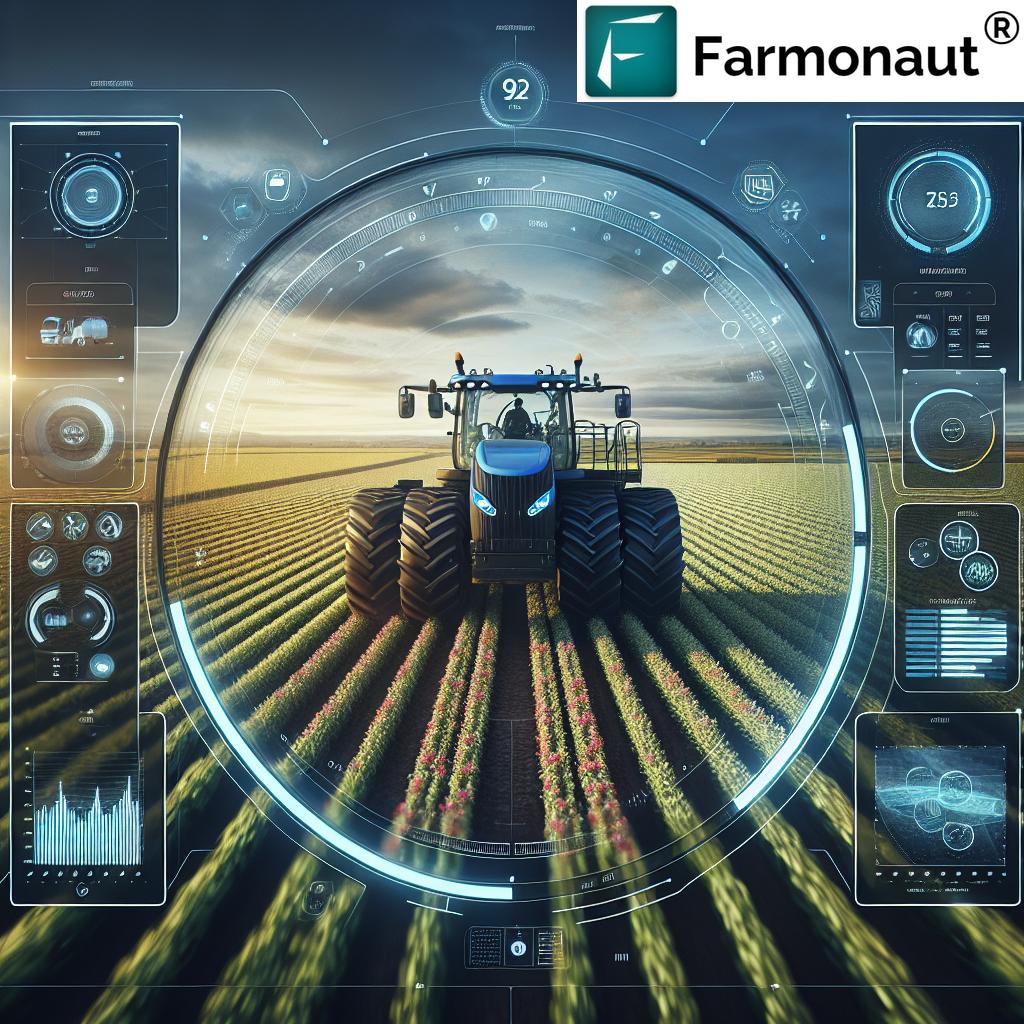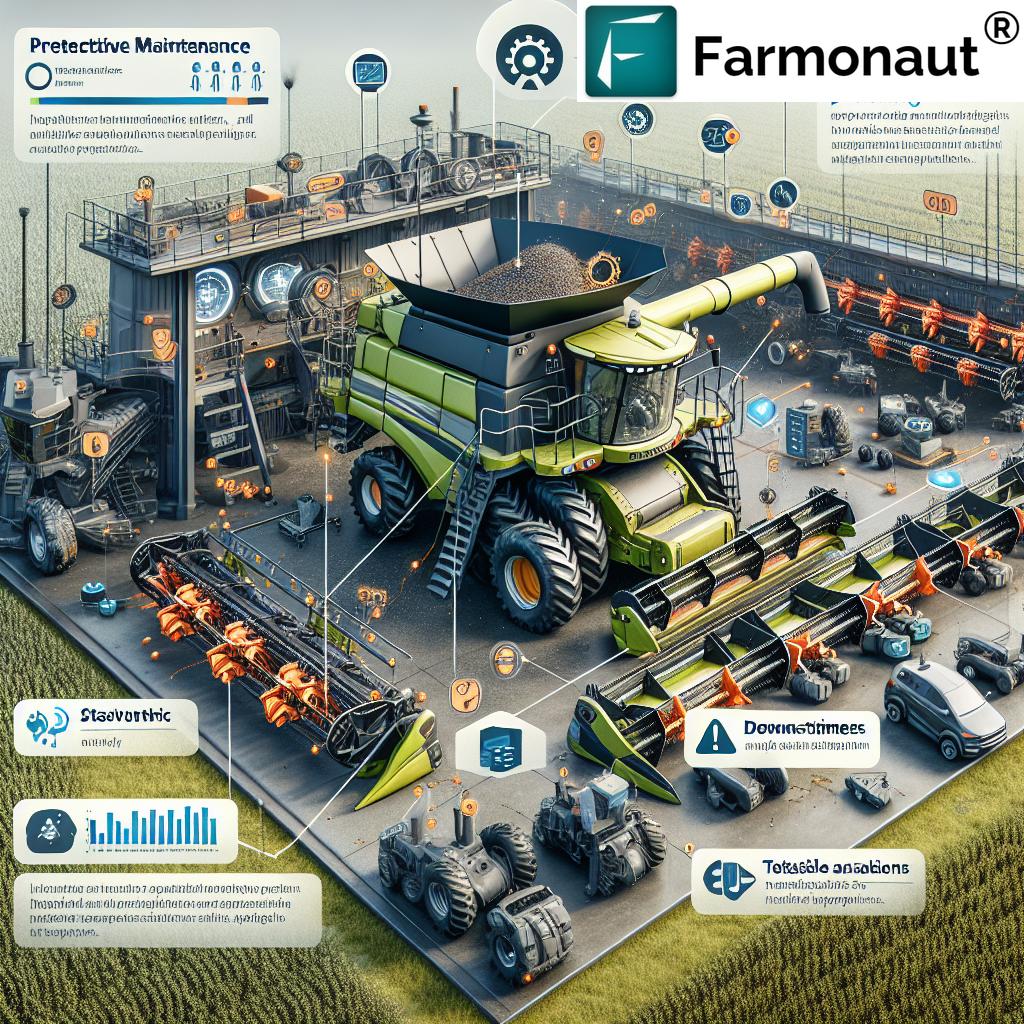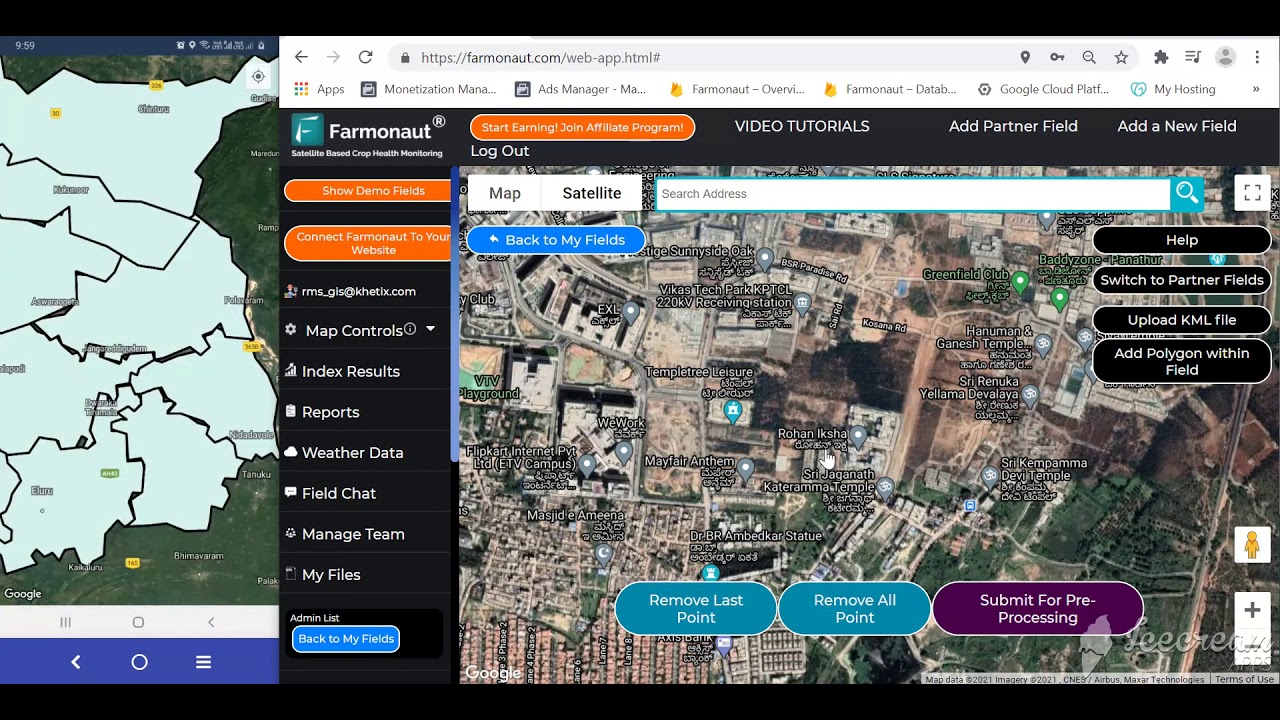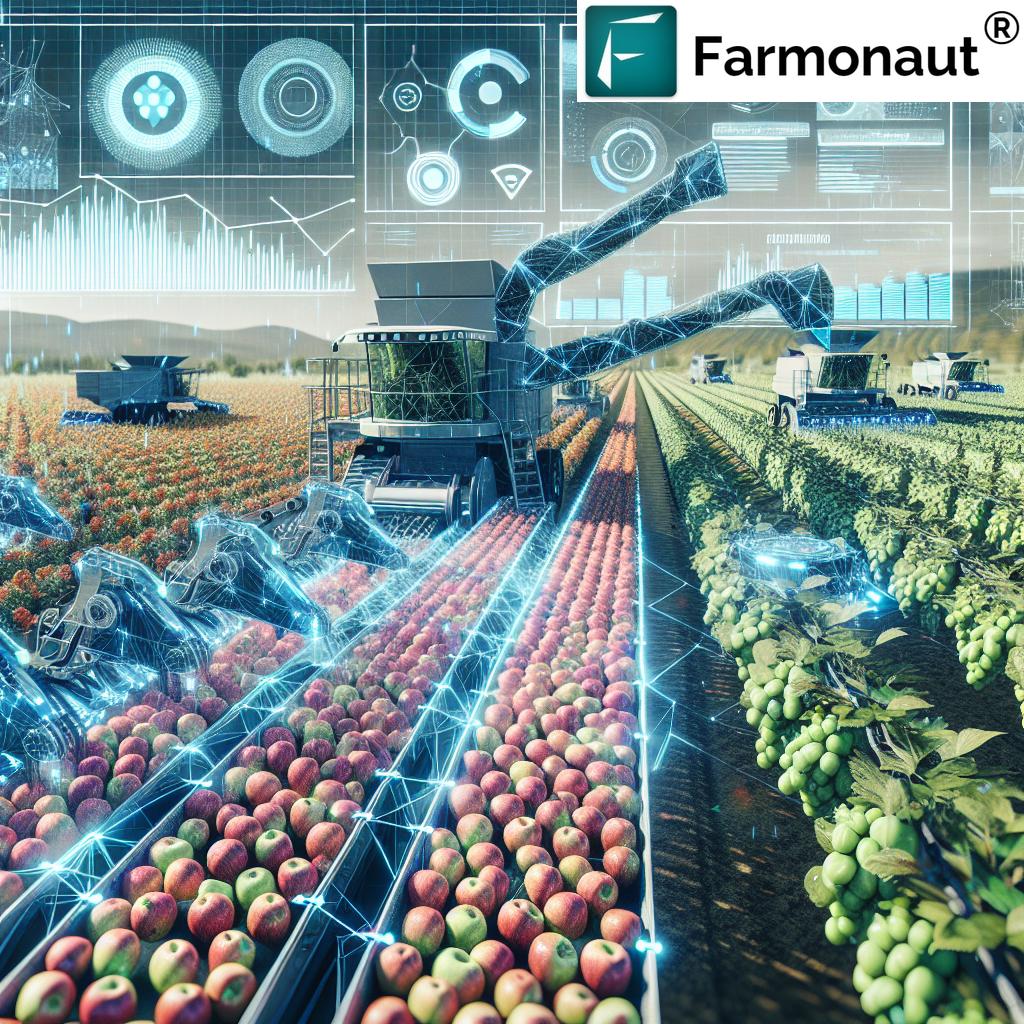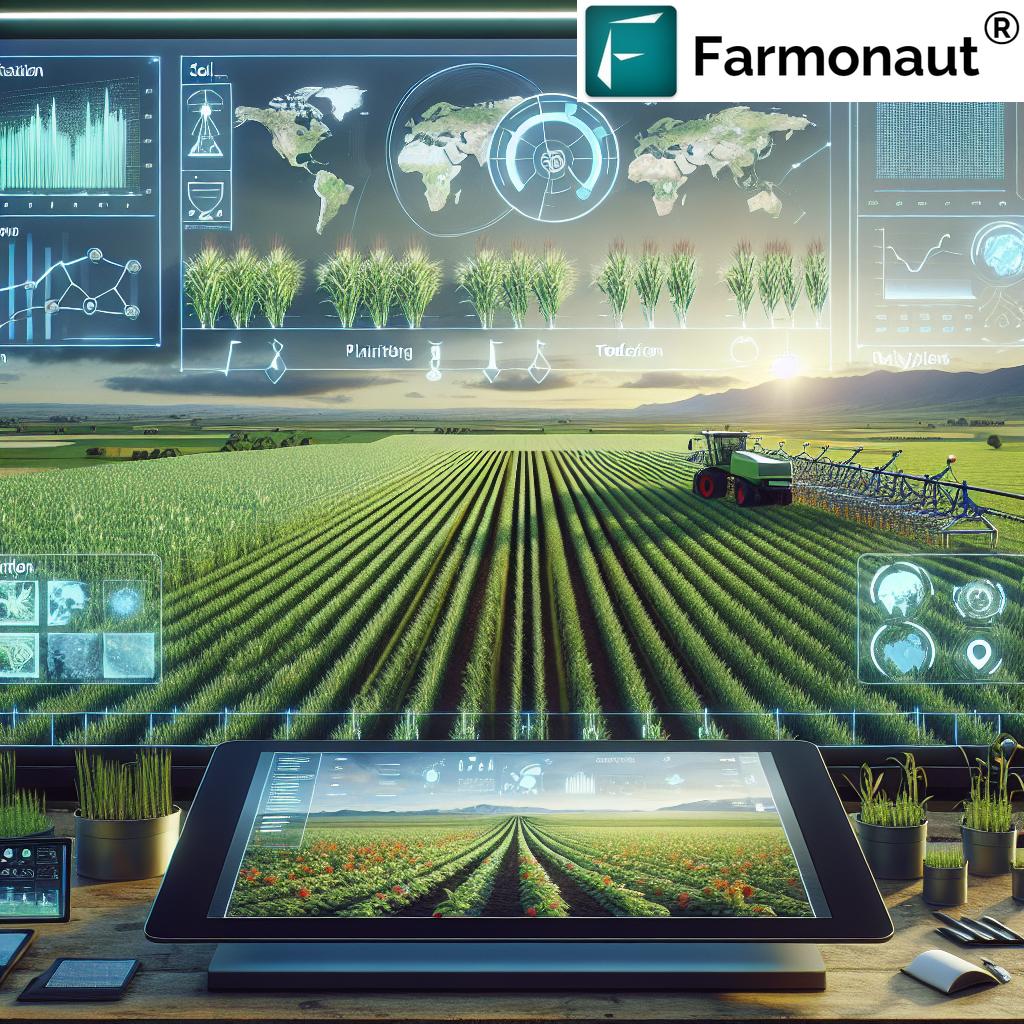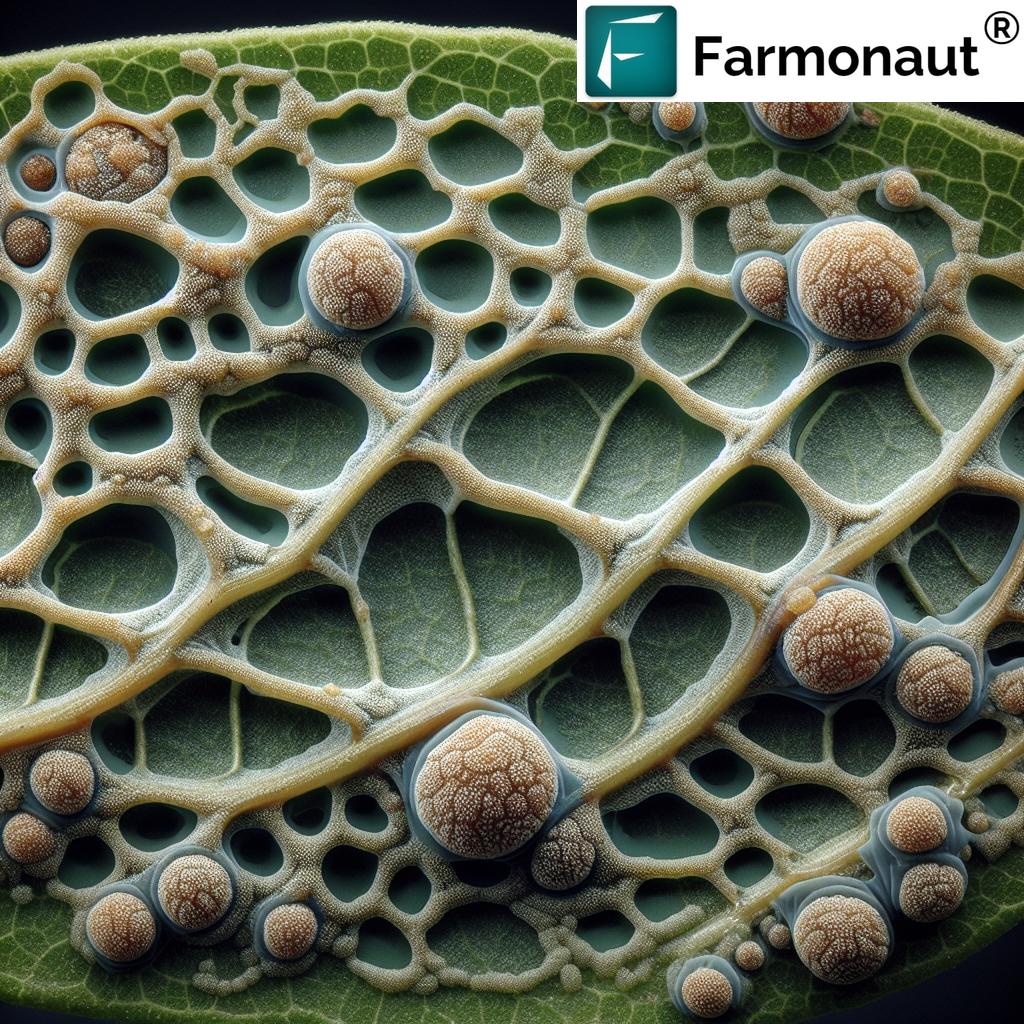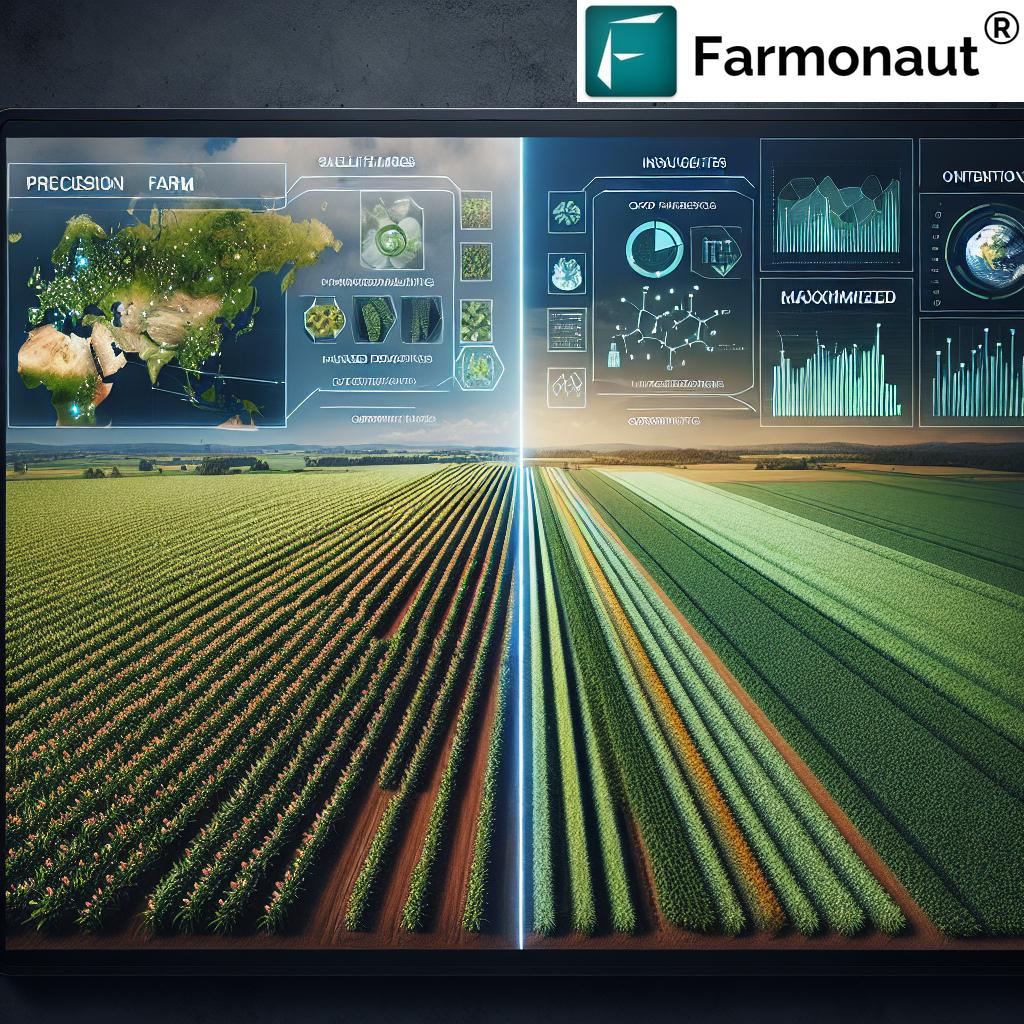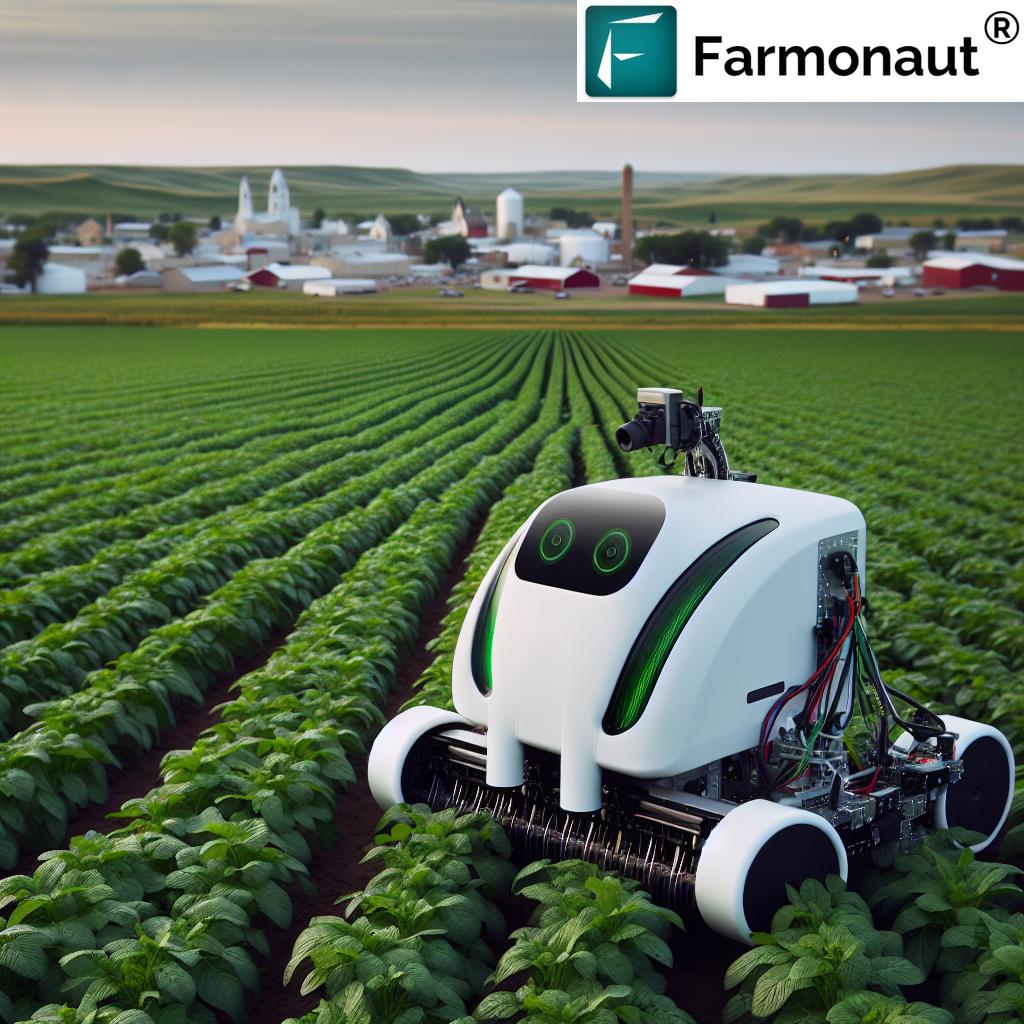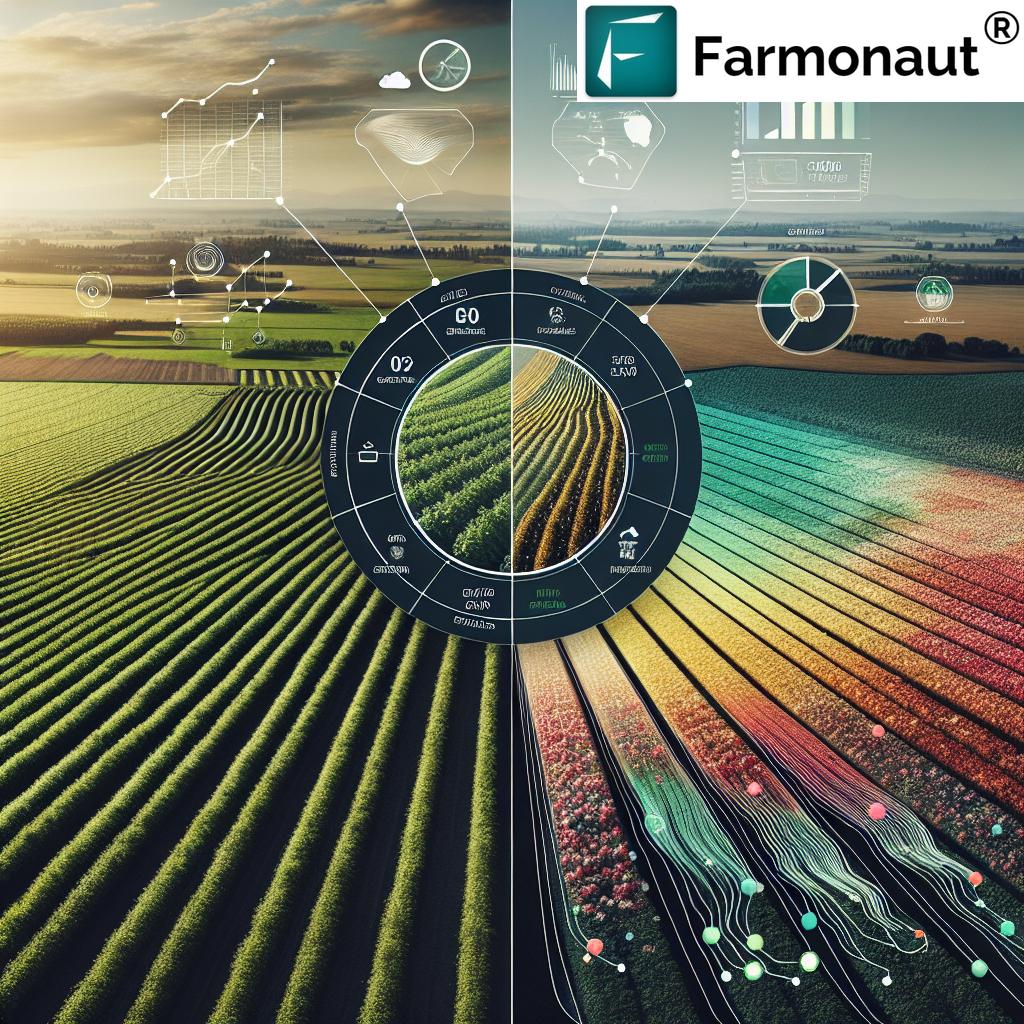Agriculture Equipment Telematics: 7 Ways to Boost Farming
The landscape of modern agriculture is undergoing a profound transformation, powered by the integration of data-driven systems, advanced telematics technologies, and innovative precision farming methods. As we strive for sustainable farming practices and improved efficiency, the adoption of agricultural equipment telematics stands out as a catalyst for progress. By enabling real-time equipment tracking, fleet management for farms, and actionable farm equipment data analytics, telematics systems in agriculture offer farm operators more control, greater resource optimization, enhanced operational efficiency, and a pathway to greater sustainability.
In this comprehensive exploration, we uncover seven powerful ways telematics boosts farming operations. We’ll detail the key components of agricultural telematics, outline its far-reaching benefits, and offer insights into how companies like Farmonaut are making precision farming accessible, affordable, and scalable for everyone—from individual farmers to large agribusinesses.
Understanding Telematics in Agriculture
Agricultural equipment telematics combines telecommunications, monitoring systems, and on-board sensors to deliver a holistic platform for farm machinery monitoring. Essential data—ranging from location tracking and fuel consumption analysis to equipment performance metrics and maintenance needs—are collected, transmitted, and processed by smart, centralized software systems.
With rapid advances in precision farming technology, agriculture telematics now empowers farmers to make informed decisions, optimize field operations, and build more resilient business models. Instead of operating machinery blindly, agriculture professionals are leveraging data-driven insights and remote diagnostics to transform their daily workflows.
Key Components of Agricultural Telematics
What makes a telematics system in agriculture effective? The effectiveness of telematics is built upon four technological pillars:
- GPS Tracking: Provides real-time tracking for machinery, allowing precise fleet management, optimum route optimization, and reductions in idle times.
- Sensor Integration: Embedded sensors monitor critical equipment parameters such as engine performance, fuel levels, operational hours, and temperature. This data is key for predictive maintenance for agricultural equipment.
- Communication Systems: Secure and rapid data transmission links keep vital farm equipment data analytics flowing between machines and centralized management platforms.
- Data Analytics Platforms: Advanced platforms process and analyze collected data to generate actionable insights—enabling predictive analytics, efficiency optimization, and operational planning.
Comparison Table: Traditional vs Telematics-Enabled Management
The table below compares the impact of telematics and precision farming technologies with traditional farm fleet and equipment practices:
| Feature / Aspect | Traditional Approach | Telematics Approach | Estimated Improvement |
|---|---|---|---|
| Fuel Efficiency (%) | Manual recording, inefficient routes, higher consumption | Real-time tracking, optimized operations, reduced consumption | 15-25% savings |
| Maintenance Cost Reduction (%) | Reactive (after breakdowns) | Predictive, issue alerts before failure | Up to 30% reduction |
| Operator Productivity (%) | Untracked, variable output | Monitored performance, optimized scheduling | 10–20% increase |
| Downtime Reduction (%) | High, due to unforeseen breakdowns | Early warning, planned service | 20–35% reduction |
| Environmental Impact (rating) | Higher emissions, input wastage | Reduced emissions, optimized inputs | Significant improvement (greener operations) |
| Fleet Utilization (%) | Low, with frequent idle periods | Monitored and scheduled for max use | Up to 25% increase |
Agriculture Equipment Telematics: 7 Ways to Boost Farming
Now, let’s break down the seven most impactful ways telematics systems in agriculture are revolutionizing farm operations and driving the shift to precision farming technology:
-
1. Real-Time Machine and Resource Monitoring
Telematics systems allow for seamless real-time equipment tracking and resource allocation. By constantly collecting location and health metrics from every machine, farmers and farm managers can know exactly where assets are deployed, what condition they’re in, which operators are most productive, and which machines require attention. This enables better resource allocation, timely action on issues, and ultimately, more efficient farm operations.
- GPS data ensures you never lose track of key machinery—whether it’s a combine harvester, tractor, or sprayer.
- Sensor-equipped systems monitor fuel levels, engine performance, and operating hours, alerting management to inefficiencies, excessive idle time, or abuse.
-
2. Predictive Maintenance and Reduced Downtime
Traditional farm equipment management relies on scheduled or reactive maintenance—waiting for parts to break or routine intervals. Telematics turns this on its head by enabling predictive maintenance for agricultural equipment. By monitoring real-time sensor data on vital machinery parameters, telematics systems forecast potential failures and alert operators before costly issues occur, dramatically minimizing unplanned downtime and prolonging equipment lifespan. Maintenance and repair teams can plan interventions with less disruption to operational schedules, ensuring continuous productivity.
Learn more about enhancing predictive maintenance and reducing downtime with our Fleet Management Tools.
-
3. Optimized Fleet Management for Farms
A modern farm often manages dozens of assets moving across hundreds—or thousands—of hectares. Telematics ensures every machine is used efficiently by tracking fleet locations, optimizing work assignments, and automating scheduling. With fleet management for farms, route optimization features, and telecommunications-enabled monitoring, farmers realize significant cost savings by maximizing working hours and minimizing unnecessary fuel consumption or travel distances.
- Automated reports spotlight under-utilized machinery, enabling managerial interventions and smarter purchasing decisions.
- Geofencing enhances security, alerting teams if equipment leaves designated areas to prevent theft and misuse.
Our Fleet Management Solution provides these capabilities directly via app and API.
-
4. Data-Driven Insights for Input Optimization
By leveraging farm equipment data analytics and precision farming technology, telematics empowers informed application of fertilizers, water, and crop protection products. Historical and real-time data analysis enables managers to minimize input waste and focus inputs where they’re most needed, which enhances productivity and supports sustainable farming practices.
- Farmonaut’s satellite-based crop health monitoring tools extend these capabilities—delivering high-resolution NDVI, soil moisture, and field condition reports for on-demand, actionable insights. Explore our Carbon Footprinting Solutions for Sustainability Benefits
-
5. Remote Diagnostics and Issue Resolution
With telematics, remote diagnostics can identify underperformance or technical issues instantly—without dispatching technicians to the field for every concern. Early detection and rapid troubleshooting minimize costly field visits, reduce repair expenses, and speed up equipment turnaround time, keeping operations on schedule even in remote or resource-limited geographies.
Support for Large Scale Farm Management is seamlessly integrated!
-
6. Enhanced Safety and Security
State-of-the-art telematics systems in agriculture monitor operator behavior—for example, detecting excessive speeds, unsafe acceleration, or fatigue—helping ensure better safety outcomes and reducing the risk of accidents. In addition, geofencing and automatic alerts respond immediately if a machine deviates from authorized operational zones, acting as a powerful deterrent against theft and unapproved use.
-
7. Promoting Environmental Sustainability
By optimizing inputs, reducing waste, and monitoring emissions, telematics is crucial for modern sustainable farming practices. Cutting fuel consumption through efficiency not only saves money but also shrinks the environmental footprint of farming operations. Detailed operational data allows for continuous improvement and compliance with environmental regulations, making sustainability a measurable and actionable business priority.
Farmonaut’s Carbon Footprinting Technology provides real-time emissions data for sustainability compliance.
API Developer Documentation
How Farmonaut Empowers Modern Agriculture
At Farmonaut, our mission is to democratize precision agriculture by making cutting-edge satellite-based farm management solutions accessible to all. We do this through a platform that delivers unrivaled crop health monitoring, AI-based farm advisory, blockchain-enabled traceability, and resource management tools—everything needed to unlock the full potential of modern farming operations.
- Satellite-Based Crop Health Monitoring: Our service leverages multispectral satellite images to monitor vegetation health, soil moisture levels, and more. This enables informed input application and resource optimization for higher crop yields, reduced resource wastage, and improved sustainability.
- Jeevn AI Advisory System: Personalized, AI-driven advice on crop management and weather forecasts—powered by real-time satellite data. This empowers farmers with timely, actionable insights to optimize decision-making and maximize efficiency.
- Blockchain-Based Traceability: Our blockchain integration delivers next-level product traceability, increasing transparency in agri-supply chains and bolstering consumer trust.
- Fleet & Resource Management: Real-time fleet management for tractors, harvesters, and farm vehicles improves logistics, reduces operational costs, and ensures maximum asset utilization.
- Carbon Footprinting: Real-time emissions calculation and tracking for eco-conscious compliance with our carbon footprinting solution.
- API-First Flexibility: Our platform and data APIs (see API docs here) enable easy integration with agri-research projects, insurance calculations, and third-party digital solutions.
We provide these technologies to a diverse range of users—individual farmers, cooperatives, agribusinesses, government institutions, and more. Our subscription-based model ensures cost-effective access, while scalability guarantees that any operation, from a smallholder to a national enterprise, can benefit.
Top Benefits of Telematics in Agriculture
- Enhanced Operational Efficiency: Real-time monitoring and predictive alerts ensure issues are resolved before they cause breakdowns, maximizing machine lifespan and uptime.
- Cost Savings: Smarter tracking and fuel consumption analysis drive down operational costs by identifying wasted fuel, misuse, or suboptimal scheduling, while reducing overall maintenance expenses and extending equipment lifespan.
- Improved Productivity: Automated management of machine assignments, hours, and field conditions ensures each input—operator, fuel, equipment—delivers maximum output and yields.
- Boosted Safety and Security: Operator behavior is closely monitored and any deviations trigger instant notifications, supporting a culture of safety and loss prevention for valuable machinery.
- Environmental Sustainability: Telematics enables precision applications of inputs, tracking carbon footprints, and analyzing emissions data to support environmentally friendly practices and regulatory compliance.
Applications of Telematics in Agricultural Equipment
-
Fleet Management for Farms:
Telematics enables full visibility over asset location, machine status, and operator behavior. This supports real-time resource allocation, minimizes idle times, and helps ensure that every machine is where it’s most needed.
See how our Fleet Management App can help your operation. -
Predictive Maintenance for Agricultural Equipment:
With continuous monitoring of health indicators and performance metrics, issues are flagged in advance, allowing for cost-effective, proactive action. This significantly reduces major breakdowns and results in measurable cost savings. -
Precision Agriculture:
Detailed insights into soil health, crop quality, and field conditions enable targeted input applications, reducing wastage and maximizing yields.
Our Farmonaut App delivers satellite-driven field condition mapping directly to your device. -
Remote Diagnostics:
Technicians and managers can monitor every machine’s “digital health” from anywhere, reducing unnecessary deployments and minimizing downtime.
Challenges and Considerations: Getting the Most From Telematics
- Data Management: The proliferation of sensor and operational data can be overwhelming. Ensuring efficient data management and analytics is critical to extracting actionable intelligence and supporting sound decisions.
- Connectivity Issues: Remote or rural areas may have limited internet connectivity, which may hinder timely data transmission or analytics platform responsiveness.
- Cybersecurity: As agricultural equipment becomes more connected, robust cybersecurity is mandatory to prevent intrusion, data loss, or compromise of sensitive operational information.
Future Outlook: Next-Gen Telematics for Sustainable Farming
The future of agricultural equipment telematics is driven by continuous advances in data analytics, machine learning, edge computing, and high-speed connectivity (such as 5G networks). We can anticipate:
- Integrated AI platforms offering real-time decision support, automated optimization, and better yield prediction.
- More robust satellite imaging for deeper, field-specific insights.
- Increased automation between machine hardware, telematics systems, and digital farm management apps.
- Stronger focus on scalable, API-first solutions for third party integration and ecosystem development (see our API for developers).
- Democratized access for small farms and emerging markets driven by cost-effective cloud and mobile solutions.
As these capabilities evolve, the gap between tech-enabled and traditional farming will grow. Adopting agricultural telematics is no longer just a competitive advantage—it’s an essential part of growing a future-proof farm business.
FAQ: Telematics for Farm Equipment
What is agricultural equipment telematics?
It’s the integration of telecommunications, sensors, and real-time data monitoring systems into farm machinery, providing instant insights for asset management, maintenance, security, and resource allocation.
How does telematics help reduce costs on a farm?
By tracking consumption, identifying operational inefficiencies, providing predictive maintenance alerts, and minimizing waste or misuse, telematics leads to fuel savings, reduced repair costs, and better resource use.
Can telematics work in rural areas with poor connectivity?
While real-time transmissions may be limited by poor connectivity, many systems can store equipment data locally and transmit updates once the connection improves. Look for platforms built with offline data handling features for optimal performance.
Does Farmonaut manufacture tractors or telematics devices?
No, Farmonaut is not a manufacturer or seller of farm equipment, machinery, or input products. Instead, we deliver advanced digital technology for farm monitoring, satellite analytics, and management via mobile, web, and API platforms.
Can I access Farmonaut’s services on my phone?
Yes! Our solutions can be accessed via Android, iOS, and web/browser apps. Start by downloading our Android App or iOS App.
How do Farmonaut’s solutions support small and large farmers?
Our subscription model means even smallholder farms can afford satellite-based crop monitoring and fleet management, while large agribusinesses benefit from scalable features for extensive plantation, large scale farm management, and resource planning.
What if I want traceability for my produce?
Our blockchain product traceability system helps secure every stage of your supply chain—ideal for food and textile companies concerned with authenticity and consumer trust.
Is it possible to integrate Farmonaut data with my existing apps?
Absolutely. Farmonaut’s API enables you to pull essential crop, weather, and operational data directly into your digital farm or business management platform. Learn more at our developer documentation.
Conclusion: Growing Smarter, More Sustainable Farms
The role of telematics systems in agriculture is only expanding as global demands for food security, operational efficiency, and sustainability rise. By integrating real-time machine monitoring, data-driven inputs, and advanced management tools, farmers move towards a future where every hectare and every hour is optimized for success.
As leaders in agricultural technology, we at Farmonaut are committed to providing affordable, accurate, and scalable solutions—empowering all stakeholders to participate in the data-driven agricultural revolution. With the continued evolution of cloud, satellite, AI, and telematics, the possibilities are nearly limitless. Start your journey today and experience the next generation of efficient, resilient, and responsible farming!
Farmonaut Subscriptions: Affordable, Scalable Access
Ready to experience the power of agricultural telematics, precision satellite analytics, and AI-driven insights for farm management? Choose a Farmonaut subscription below to unlock cost-effective access for individuals, cooperatives, and agribusinesses of all sizes:



